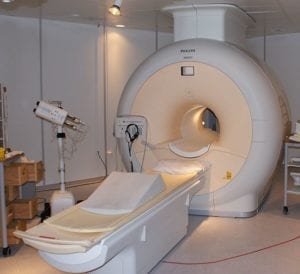MRI May Detect Metal on Metal Hip Injuries Before Pain
Many of our clients who have hip prosthesis wonder if they should have an image taken even though they are not experiencing any pain. A new study suggests that may not be a bad idea.
Published in the May issue of The Journal of Bone and Joint Surgery, researchers find that an MRI (magnetic resonance imaging) may actually detect metal debris in the body before it causes pain and tissue damage that is expected to follow.
This is important.
The sooner a hip that is leaching metal ions into the body can be removed, the better the chance the patient has of minimizing damage to bone, muscle and soft tissues surrounding the implant. We’ve seen this in metal-on-metal implants made by DePuy such as the ASR, by Stryker (Rejuvenate and ABC II), and by Biomet (Magnum).
In this study, conducted at Hospital for Special Surgery in New York City, researchers found that among 68 patients who had had failed MoM hip implants, an MRI could be used to gather data and determine the markers for early failure such as inflammation of the joint lining (synovitis), even when there was no pain present. In addition, 75 percent of hips that had failed or experienced a mechanical defect were detected, as well as 78 percent of hip implant patients who were experiencing hip pain.
Historically, metal ion testing has been the best indicator of metal ion accumulation in the blood and tissues. Unfortunately for many patients the accumulation of metallic debris may be too late and tissue damage may already be well underway.
Instead of playing the waiting game, this study indicates patients and their doctors may decide to be proactive with the help of an MRI scan.
At one time, metal-on-metal hips were thought to represent the latest and greatest innovation in hip prosthesis, but by early this year the FDA acknowledged that MoM hips are putting patients at risk with metal toxicity and tissue and bone damage that leads to early implant failure.
DePuy Orthopaedics, a unit of Johnson & Johnson, recently announced it will discontinue two metal hip components by August 31 of this year and is pulling out of the MoM market. That includes the Ultramet MoM Articulation and Complete Ceramic-on-metal Acetabular Hip System, though the healthcare giant does not call it a recall and denies the decision is related to safety issues.
DePuy removed the ASR from the U.S. market in 2010 even though Australia had stopped sales in December 2009. Stryker voluntarily recalled Rejuvenate and ABG II hip implants last year.
It’s estimated about 250,000 Americans receive hip implants every year, and up until recently about one-third of those patients had received a metal-on-metal implant. Now metal-on-metal hips are thought to represent less than two percent of the global market.
Share This



